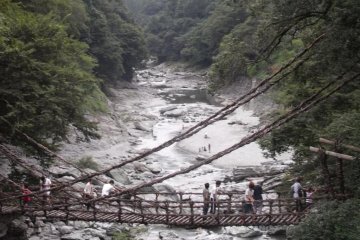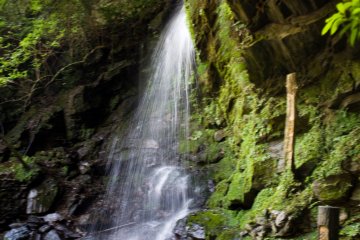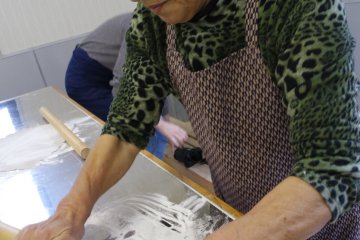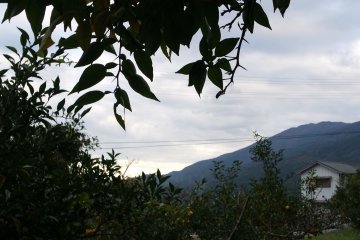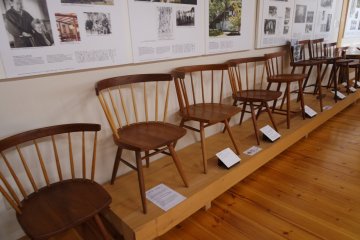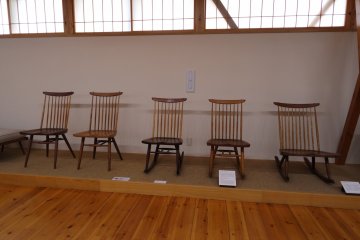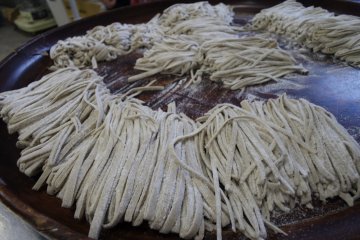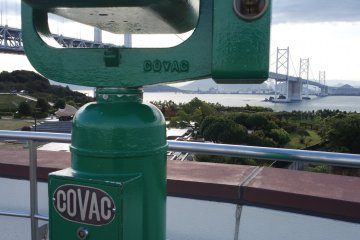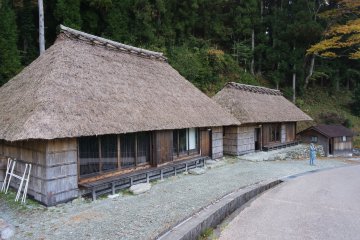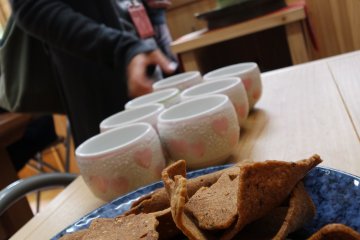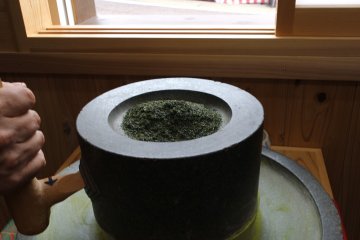Convenience stores, convenient public transportation, conveniently packaged noodles; Japan has mastered quick and easy living! But, could there be an even more comforting lifestyle? When we think of earlier times, we tend to remember the hardships and struggles; reasons why we invented more convenient methods of doing things. However, ‘convenience’ is not necessarily ‘relaxing.’ So how can we have a healthy, balanced existence, where the fast life meets the slow life? Nestled into the Seto Inland Sea in Southern Japan, Shikoku is a place which seems to have naturally integrated today’s comforts into the simplicity of its past.
Why Shikoku?
True to its name meaning “four provinces,” Shikoku is comprised of 4 Meiji-restored prefectures: Ehime to the west, Kagawa to the north, Kochi to the south, and Tokushima to the east. Perhaps the biggest tourist magnets are the great Castles, Dance Festivals and Beaches around the island. But, deep in the mountains of Shikoku, there lies a different history waiting to be understood.

Returning to our natural state
It’s undeniable that Japanese people have always appreciated nature. It’s in their poetry, their craftwork, their home arrangements, food, and business slogans. In the past, it was easy for people to be inspired by their bountiful surroundings. But as modern infrastructure metallicized what was once green, Shikoku has continued to thrive in its natural habitat. It helps that, out of the four main islands of Japan, it’s the least populated; but the age group is not getting any younger. So there is a market for young families to raise themselves here, in the fresh air and clear waters which aren’t clouded by smog.
Exhausted employees, young and old, are encouraged to take a “zen-cation,” where they can recharge their motivation, re-energize their spirits, and reconnect with themselves. The infamous 88 Temple Pilgrimage (aka Shikoku Junrei), was a perfect walking route to invigorate the mind and create moments of undisturbed peace in their life.
Yet, today we are accustomed to finding relaxation in our convenience. Hot water, central air, heated floors, electric showers, and gas stoves. These things bring us a new sense of comfort. Naturally, Shikoku has adapted to the times in a most unique way.
Getting your hands on the past
Imagine if Samurais were alive today. What conveniences would they be enjoying? You can find the answer to this question first-hand by staying in a renovated home up in the Iya Mountains of Tokushima! These thatch-roofed houses look and feel like they once did, but are clean and with the added comforts of today, like electricity and filtered water. Learning about the old and grungy ways doesn’t have to be old and grungy!

Have you ever felt the twinge of aching in your shoulders from sitting too long at your desk, wondering why your ergonomic chair has failed its hype? You can discover the way a chair is supposed to support the human body by visiting the George Nakashima Memorial Gallery in Kagawa. You’ll learn how he lets the wood design themselves into furniture, and how he shaped the furniture industry in America and Japan.
Japan and the U.S. have lots of history together, but we rarely get to hear the other side. If you’re an American tourist coming to Japan, you will be fascinated to learn about America from Japan’s point of view! A great starting point is to stop in Okayama before crossing the bridge to Shikoku.
The city Kojima will teach you all about Jeans: why they were invented in the U.S., how they came to Japan, and how Japan modernized them for America - making them a round-the-globe product. Anyone interested in fashion and clothing manufacturing can have a stimulating learning experience here, where the Jeans Museum & Village shows you the different steps of clothing production including how sewing has evolved. You can even customize your own, one-of-a-kind, perfectly fitted pair of Jeans here. They say that first-time customers always come back again. Jeans seem like a simple and common product, but they are an important factor in the evolution of convenience.

Stepping back in time
You could consider Okayama to be the doorway to Shikoku, allowing you to prep your step back in time before crossing the grand Seto-Ohashi bridge. In the restored Kurashiki city, which looks like it popped right out of an Edo painting, you can participate in traditional hand-made crafts with local people whose families have kept their methods for generations. From stamping "tenugui" towels to decorating items with colorful "washi" tape, there are so many unique crafts to try.
If you take the slow boat ride along the canal, you’ll learn how the city used to be an ocean, what cotton has done for textiles in the world, why the visiting official’s favorite color was yellow, and where the hidden messages are under the bridge made of only one slab of rock. These details could have been lost over the centuries, but Shikoku has preserved so much of its original property that many areas are protected by Unesco and Japan Heritage Organizations.
Becoming one with nature
If you speak to a local family in Shikoku about a simple life, you’ll likely hear that there is little more satisfying than sharing a meal with your neighbors, keeping warm under a blanket that you made, or remembering your family’s traditions. They use tourism as a way to bring money to their island, but it’s also a way of keeping their traditions alive; teaching visitors how the past was convenient, and how old methods can still be relevant. “Sharing” the land instead of “using” the land and appreciating earth is how we keep a balanced life. If we keep earth healthy, the earth will keep us healthy. There may be something, after all, to why Japanese people live to be the oldest in the world.

In Shikoku, the air is easier to breathe in; crisp in the morning and warm in the afternoon. There is so much land to be explored on this small island, your visit will always feel new.
If you’re not familiar with climbing trees or have a fear of the forest, there is an adventure waiting for you in the Iya Valley! Guides are trained and ready to send you flying over a gorge on a zipline. As you gently hover over, the beauty of the landscape will envelop you, setting your anxiety free and landing you on the other side with a rejuvenated spirit.
Higher in the mountains are hot springs waiting to cleanse your body and soul at the Iya Onsen. This luxurious hotel is so private and secluded, you will never want to leave. Once you ride the cable car down through the vegetation, you’ll feel as if you’ve become one with nature. The springs are warm and indulgent, accepting your body back into the earth.

Along the river are old bridges that were traditionally tied with vines and made to be easily disbanded if the enemy approached. Today, we can still cross these bridges and feel small against the large, intertwining of the ropes. However, coinciding with the theme of experiencing the past with the comforts of today, these bridges are safely reinforced with wires and wooden planks. They are rebuilt every 3 years, mimicking the old ways, giving us a true feeling of time travel.

Eating from your hands
While rejuvenating our spirits is a personal goal, food is the number one source of energy for human life. We could be satisfied if we blandly quenched our thirst, but humans are complex beings which long for beauty and appreciation in our daily tasks. Imagine picking your own, pesticide-free yuzu fruit from the orchard, or harvesting gigantic, sweet shitake mushrooms from the earth which you have been delicately tending. You will appreciate finding that the food in Shikoku is fresher and tastes cleaner than processed, chemical-infused groceries.
Like most cultures, the Japanese use animals in their diet. Also like most cultures, they give thanks to those creatures who gave up their lives for our plates. But, unique to Japan, the Japanese also give thanks to the plant life which provides us with nutrients. They handle plants with care and carve them into decorative shapes. Each family in Shikoku has crafted over the generations their own style of hunting, gathering, farming, and cooking. The art of cuisine is more of a journey for the food than it is a process of the consumption of it.
For example, rice. Shikoku’s land does not have the right conditions for growing rice. On the mainland, there is a surplus of rice crackers, or “senbei,” which are salty and delicious. But in Shikoku, they eat their own “senbei” made from other materials, which are less salty but just as delicious and pair equally as well with green tea “matcha.” Both “senbei” and “matcha” are milled and prepared by hand with raw ingredients.
To hold in high regard the food we eat, we have to form a friendship with it. Buckwheat “soba” noodles are a great example of this, and you can experience the relaxing grinding of the grain and rolling of flour in Shikoku with women who have followed their family’s unique recipes for decades.

Take the opportunity to learn from the people, not only about using your hands to feed yourself, but about life in Japan, the way it was when they were young, and how they have seen Japan change or stay the same. Shikoku has all the answers to your curiosity.
Visit Shikoku
If you’re dreaming of your next vacation on a remote island where you want to relax but not have to work hard to feel it, touring Shikoku would be a great place. Consider it your home-away-from-home, and it will be all the things you long for: adventure, history, hands-on interactive experiences, stimulation for the mind, relaxation for the body, clean, healthy food, and being accepted by earth again. Experience your convenient and comfortable balanced lifestyle in Shikoku, Japan!





